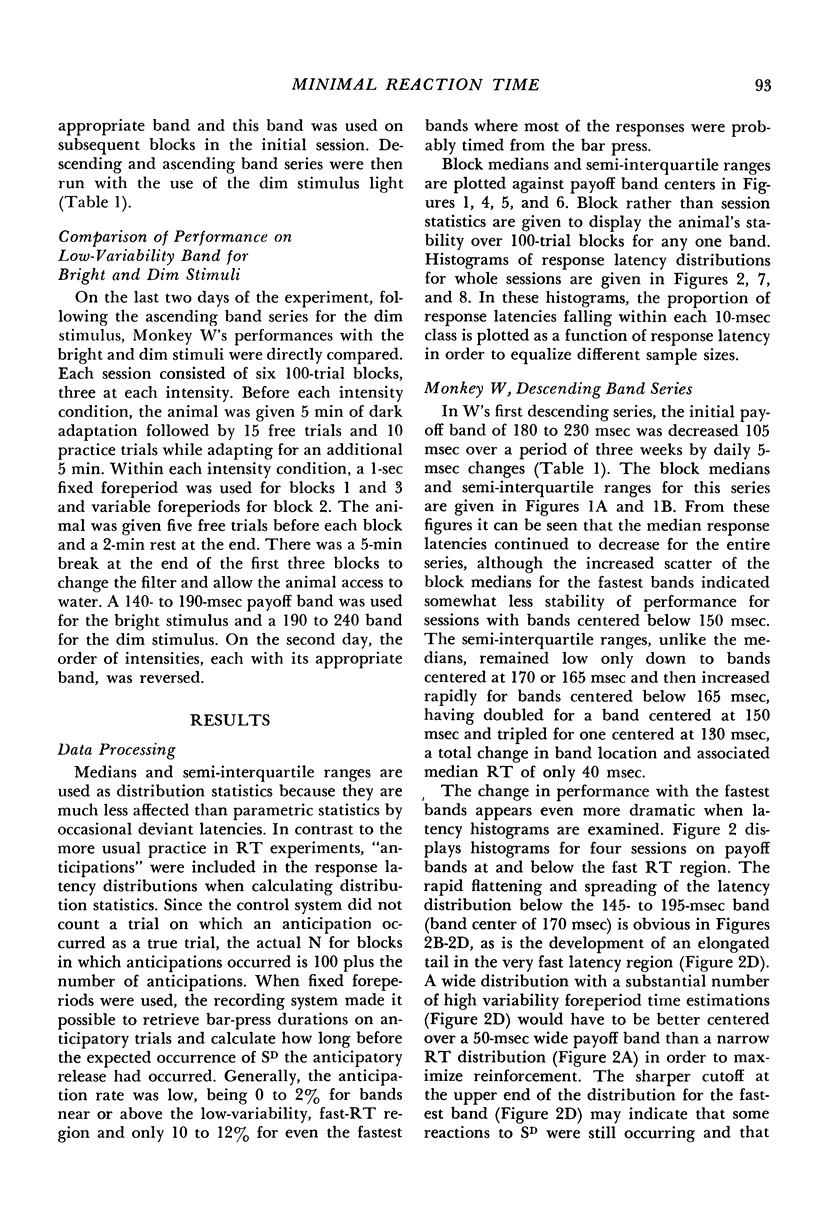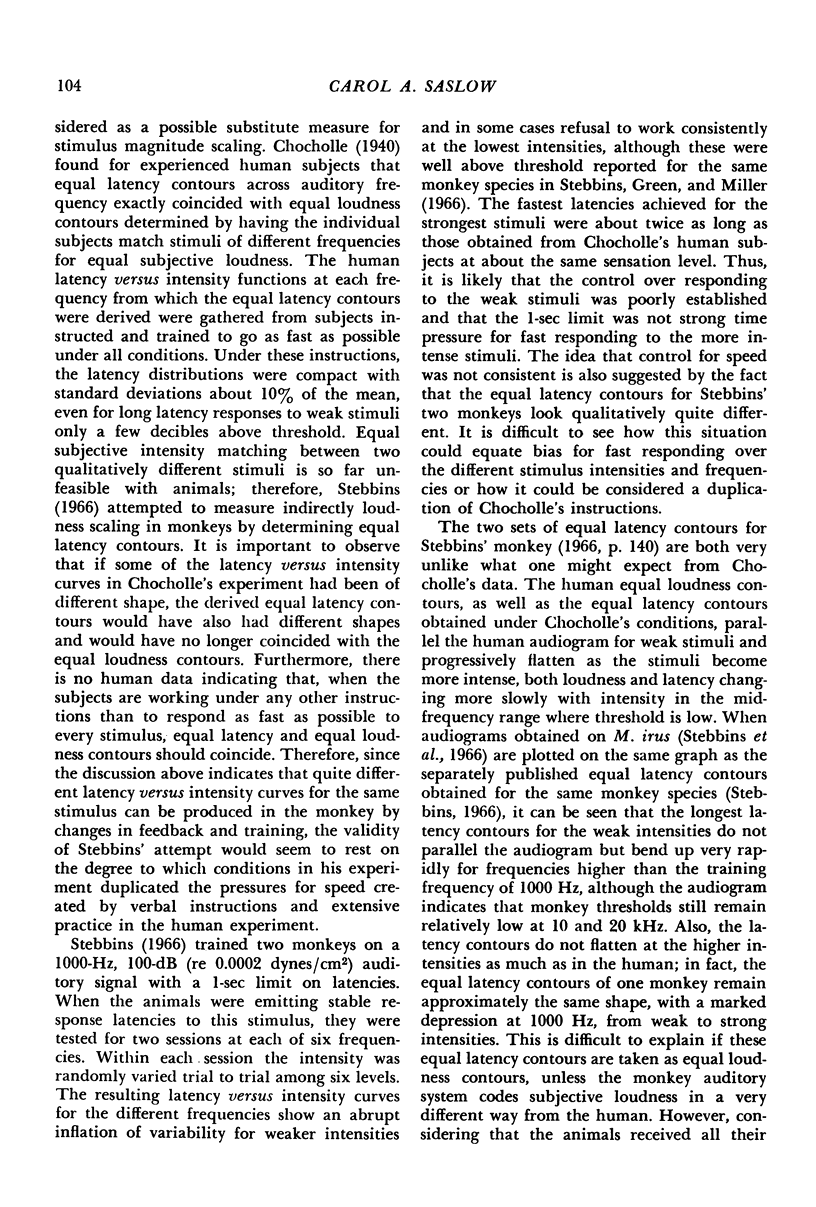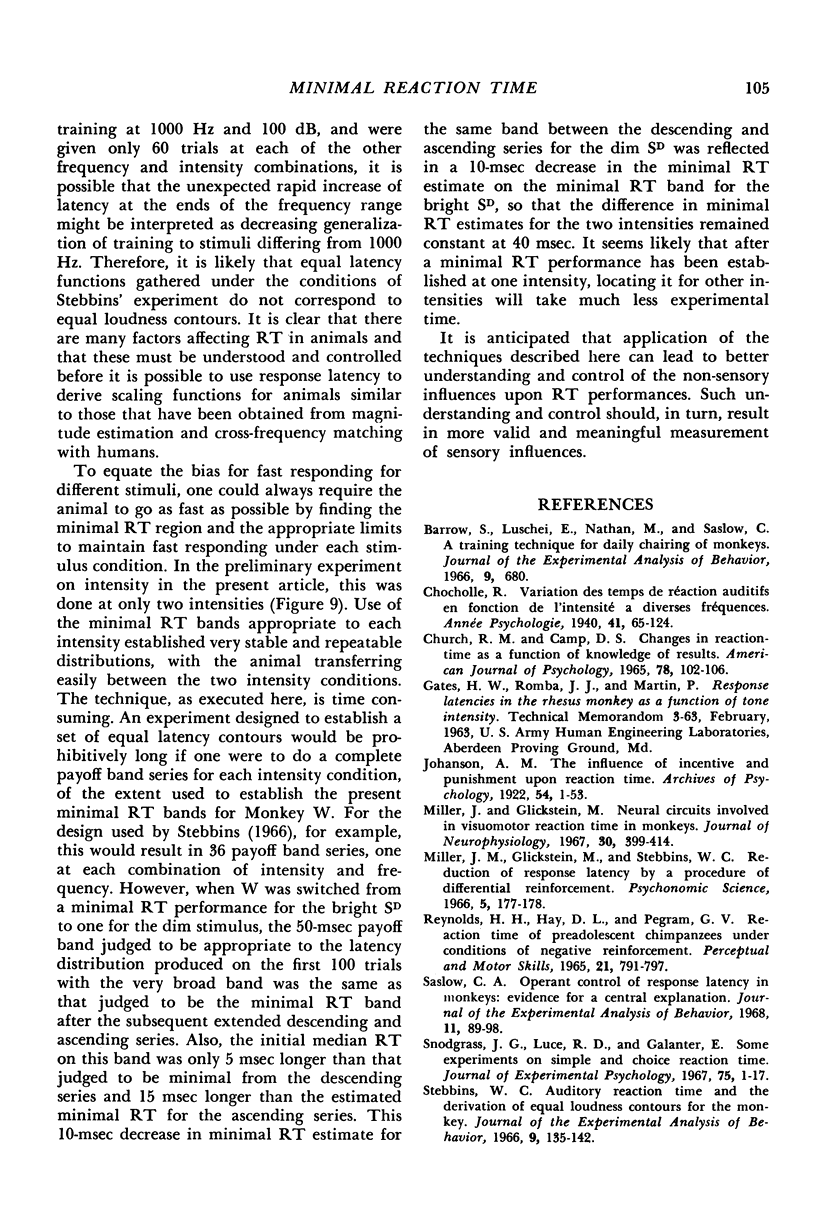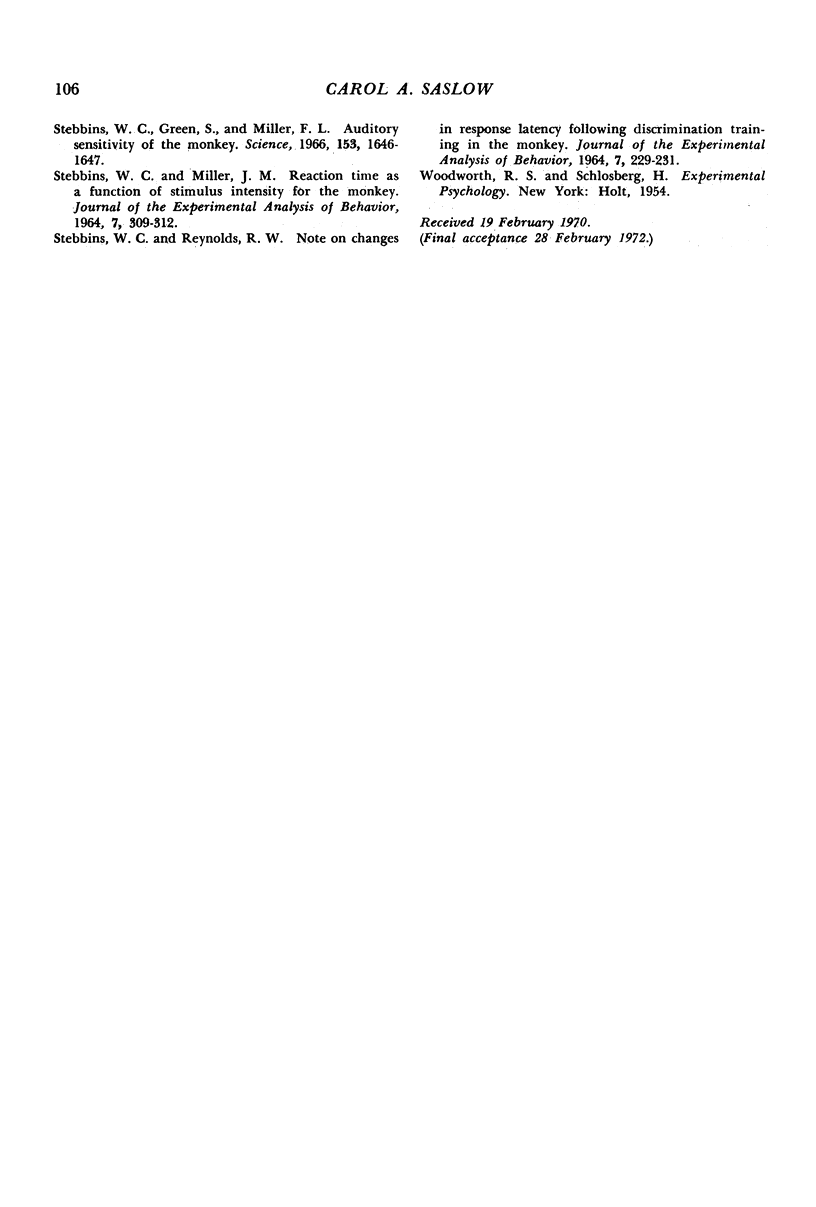Abstract
Two monkeys (Macaca mulatta) were trained to press a key after onset of a tone and to release it after a 1-sec fixed foreperiod terminated by a light. The effects of imposing temporal contingencies on key release reaction times were determined by reinforcing only those releases whose latencies from the light fell within a “payoff band”, two time limits 50 msec apart located at some delay following the light. Over several days this delay was first gradually decreased, shortening the interval between light and payoff band, and then gradually increased again. For each delay, the median reaction time and a measure of variability were obtained from the latency distribution. For both animals, median latency could be decreased to 180 msec with the variability remaining small. Moving the payoff band still closer to the light resulted in further decrease in median latency but an abrupt increase in variability. This is in agreement with a model for simple reaction time derived from human research which suggests that this increased variability results from the inclusion of high-variability foreperiod time estimations in the latency distribution. These results indicate that interpretation of monkey response latencies as “minimal reaction times” requires examination of temporal reinforcement contingencies and variability of latencies.
Full text
PDF



















Selected References
These references are in PubMed. This may not be the complete list of references from this article.
- Barrow S., Luschei E., Nathan M., Saslow C. A training technique for the daily chairing of monkeys. J Exp Anal Behav. 1966 Nov;9(6):680–680. doi: 10.1901/jeab.1966.9-680. [DOI] [PMC free article] [PubMed] [Google Scholar]
- CHURCH R. M., CAMP D. S. CHANGE IN REACTION-TIME AS A FUNCTION OF KNOWLEDGE OF RESULTS. Am J Psychol. 1965 Mar;78:102–106. [PubMed] [Google Scholar]
- Reynolds H. H., Hay D. L., Pegram G. V. Reaction time of pre-adolescent chimpanzee under conditions of negative reinforcement. Percept Mot Skills. 1965 Dec;21(3):791–797. doi: 10.2466/pms.1965.21.3.791. [DOI] [PubMed] [Google Scholar]
- STEBBINS W. C., MILLER J. M. REACTION TIME AS A FUNCTION OF STIMULUS INTENSITY FOR THE MONKEY. J Exp Anal Behav. 1964 Jul;7:309–312. doi: 10.1901/jeab.1964.7-309. [DOI] [PMC free article] [PubMed] [Google Scholar]
- STEBBINS W. C., REYNOLDS R. W. NOTE OF CHANGES IN RESPONSE LATENCY FOLLOWING DISCRIMINATION TRAINING IN THE MONKEY. J Exp Anal Behav. 1964 May;7:229–231. doi: 10.1901/jeab.1964.7-229. [DOI] [PMC free article] [PubMed] [Google Scholar]
- Saslow C. A. Operant control of response latency in monkeys: evidence for a central explantation. J Exp Anal Behav. 1968 Mar;11(2):89–98. doi: 10.1901/jeab.1968.11-89. [DOI] [PMC free article] [PubMed] [Google Scholar]
- Snodgrass J. G., Luce R. D., Galanter E. Some experiments on simple and choice reaction time. J Exp Psychol. 1967 Sep;75(1):1–17. doi: 10.1037/h0021280. [DOI] [PubMed] [Google Scholar]
- Stebbins W. C. Auditory reaction time and the derivation of equal loudness contours for the monkey. J Exp Anal Behav. 1966 Mar;9(2):135–142. doi: 10.1901/jeab.1966.9-135. [DOI] [PMC free article] [PubMed] [Google Scholar]
- Stebbins W. C., Green S., Miller F. L. Auditory sensitivity of the monkey. Science. 1966 Sep 30;153(3744):1646–1647. doi: 10.1126/science.153.3744.1646-a. [DOI] [PubMed] [Google Scholar]


